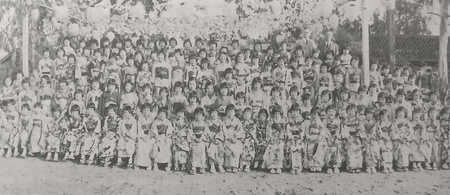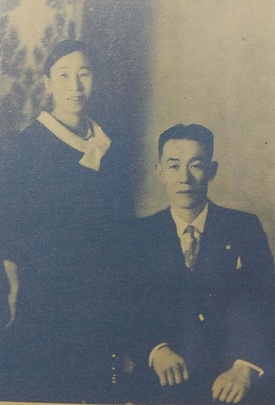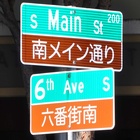From Americamura in Shima City, Mie Prefecture
Since the year before last, I have been traveling by car along the coastline of Japan. I don't travel all at once, but in several trips, starting from my home in Kanagawa Prefecture, and I try to drive along the outline of the Japanese archipelago. As part of that, I recently took a ferry from Cape Irago in Aichi Prefecture to Toba in Mie Prefecture, and traveled along the coastline to the Kii Peninsula. After that, I also took a ferry from Wakayama City to Tokushima City, and from there I drove along the Pacific coast of Shikoku to the western tip of Kochi Prefecture.
Although it wasn't the main purpose of this trip, I decided to stop by any jazz cafes, bars, or other music-related establishments in the places I visited. This time, I also checked in advance whether there were any such establishments along my travel route.
I discovered a jazz café called "SWING" on the Sakishima Peninsula, which stretches from the east to surround Ago Bay, known for its pearl farming. I thought it was a bit unusual for a place of this kind, being in a place far from the city center, so I decided to visit.
As I walked along the seaside road called "Yuyake Pearl Highway," I saw a splendid, stately brick-colored building. Unfortunately, the store was closed that day. However, when I called the store and explained that I had come from far away, they kindly opened the store for me.
The spacious space is surrounded by portraits and records of famous jazz musicians of the past. Huge speakers are set up at the back, providing a powerful acoustic experience for the jazz fans who visit.
From jazz to immigration
I talked to the owner, Hisakazu Takeuchi (88), about the history and background of the establishment of the shop for a while. Then, at some point, he said with a smile, "My grandfather immigrated to America. This place, Katada, had a lot of American immigrants and was called 'Amerikamura' (American Village). I wonder if that's what influenced me to get interested in jazz."
The place where SWING is located is called Katada, Shima-cho, Shima City, Mie Prefecture. I later learned that this place, formerly called Katada Village, had long been known as America-mura and was the subject of immigration studies.
Suddenly intrigued by Takeuchi's story, I continued the conversation, and Takeuchi pulled out a book from a shelf in the store. The sturdy outer box was labeled "The Development Record of the San Pidro Brotherhood." The author was his grandfather, Takeuchi Kosuke, and the colophon stated it was published on July 30, 1937. It was printed in Tsu City, Mie Prefecture, and was also published by Kosuke, so it was "not for sale." According to Takeuchi, Kosuke had been a newspaper journalist in America.
A quick look at the book reveals that "San Pedro" refers to the port town of San Pedro, which can be considered the sea entrance to the big city of Los Angeles, and the book is a detailed record of the history of Japanese people who immigrated to this area from the Meiji period to around 1935.
The colophon states that Kosuke's address at the time of publication was "PO BOX45 Terminal Island, Calf. USA." "Terminal Island" refers to the area that juts out into the sea that is part of San Pedro.
The book is well-made, with many photos relating to San Pedro and the Japanese at the beginning. It really seems to reflect the energy of the local Japanese community at the time.
The story of jazz turned to the story of immigrants to America, and I was very interested in it, but I had to hurry on in the middle of my trip. So I promised to treat it with care and got permission from Mr. Takeuchi to borrow the book for a while.
After returning from my trip, I carefully flipped through the pages of "Records of the Development of San Pidro Compatriots." Among the photographs at the beginning of the 124-page book is a photograph of a shrine and its priest, with the caption "San Pidro Grand Shrine..." There is also a group photo of children, with the caption "A commemorative photo taken during the Doll's Festival at East San Pidro Public School," in which more than 100 girls, most of whom appear to be Japanese, are lined up in kimono. This also gives an idea of the bustle of the Japanese community at the time.

The main part of the book begins with a brief overview of Japanese immigration to California in the "History of California and Outline of Relations with Japanese People," and then goes on to summarize the movement to "exclude Japanese people in America," which was an issue at the time.
After this, interspersed with the author's own fictional immigration stories, the book goes on to provide a detailed summary of the history of San Pedro and how the Japanese took root and developed there.
According to this, the first Japanese people to come to San Pedro were around 1899, when Maeda Kinzo, Sujishi Jutaro, and Yamamoto Kotaro worked as shoe shiners or domestic workers in the city, and 12 years later they began working in the fishing industry.
After that, the Japanese people made inroads in fishing, agriculture, and commerce. At the time, there were approximately 3,300 Japanese people living within the jurisdiction of the San Pedro Japanese Association, which was organized in 1920. This book summarizes the development of industries such as fishing, agriculture, and commerce by Japanese people in the area, as well as their educational, cultural, and religious activities, and the establishment and activities of various organizations.
What is interesting is that, in the area of education, the book contains essays written by children from that time. For example, a girl who appears to have been 13 years old at the time wrote in an article entitled "Impressions of Japan" about her experiences visiting Japan with her parents.
"There are many things to see and hear," she says. While she was impressed by Mount Fuji, she also frankly comments about the houses, roads and cityscape, saying, "I was surprised at how little progress there has made."
The second half of the book is a "biography" that introduces the profiles of Japanese people who have made achievements in San Pedro. The last one is Kosuke, and the following is written along with a photo of him standing next to his wife:
Takeuchi Kosuke
He went to the United States in 1918. After several years of various labor jobs in Rafu, he worked on a farm and golf course in the Gardena region for five years. He then worked for the Edison Electric Company in Nagahama for many years. In 1924, he returned to Japan temporarily and returned to the United States with his wife, where they worked on a farm for several years. After that, he worked for the South Coast Times on Terminal Island for many years. During that time, he served as the secretary of the Japanese Association there and as a correspondent for the San Pedro branch of the Mainichi Newspaper Company in California. He returned to Japan again in 1936 to compile the "Record of the Development of San Pedro Compatriots."
Mrs. Yasu
"Group relations"
Former chairman and secretary of the Katada Village Association, former chairman of the North American branch of the Katada School Friendship Association, former secretary of the East Port Parents Association and several other organizations(Note: Some old kanji characters have been changed.)
The articles about Japanese people introduced in the "Biographical Biography" are accompanied by family photos, as well as photos of the shops they run, fishing boats they own, etc. Looking at their hometowns, Mie Prefecture and Wakayama Prefecture, including Katada Village, stand out, but the others are from a variety of places, including Shizuoka, Fukuoka, and Nagano.
Looking at their achievements, it is easy to understand why the author wanted to compile a history of their development under the title "Record of the Development of Our Country." However, a few years later, war broke out between Japan and the United States, putting an end to this development. This book may have captured the heyday of the Japanese community in San Pedro.
During my trip, I stopped by a jazz cafe and discovered something unexpected about Japanese immigrants. This prompted me to research why the former Katadamura village became Americamura, which led to the story of an interesting person. I would like to introduce this story at another opportunity. (Titles omitted)
© 2023 Ryusuke Kawai







